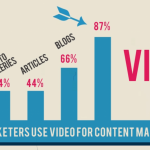the largest Challenges facing The information industry In 2016

Journalism experts weigh in on what they are grappling with this 12 months, from cellular experiences to rebuilding trust.
January 4 10:06 AM
mobile design, virtual reality, building belief with numerous communities, shifting revenue fashions, and finding new codecs for storytelling as know-how shapes content material: These are among the biggest concerns journalists can be grappling with in 2016. this is how one of the crucial prime thinkers within the field are planning to sort out each and every of these challenges:
improving The experience Of cell web

Richard Gingras, head of news and social merchandise, Google:
“speed and efficiency are power factors of pain and consumer frustration—pages are slow to load and, once loaded, scroll and display poorly, too ceaselessly with advertisements which might be extra anxious than helpful. How can we make the cell internet as fast and furiously compelling as we are aware of it can be? the value of the open net to publishers as a discovery funnel to build audiences is far too an important to now not tackle this difficulty with urgency. Collaborative efforts just like the open-source AMP project to make web content ‘fast all over the place’ have emerged. With greater than a thousand publishers and expertise firms involved within the effort, it appears stable growth shall be made in 2016.” —@richardgingras
Investing In And Innovating On virtual reality
Robert Hernandez, journalism associate professor, USC:
“whether you dismiss it as hype or now not, the truth is digital truth expertise is coming, and it is coming faster than you think. So, the most important challenge the journalism trade faces in 2016 is how can they make investments and innovate on an emerging expertise that hasn’t long gone mainstream but. Do information organizations get in early and chance the tech now not figuring out? Or will have to they wait and let others outline VR journalism and risk being left behind?

“In 2016, the journalism trade needs to begin making ready to lead the next disruption. When it if truth be told hits is nearly inappropriate, because there is no doubt it’s going to hit. Journalism needs to start experimenting with platforms just like the Oculus Rift, Samsung tools VR, Google Cardboard now. to try this, information organizations can accomplice up with institutions just like the college of Southern California and different faculties that are posed to lead the charge. My college students and i are making ready the first drafts of VR/AR/MR Journalism and would really like to collaborate. you’ll discover a few of our early/beta work right here.
“We both have a vested passion in shaping journalism in these rising areas, making certain its relevancy. while I wouldn’t are expecting it to be in every family, 2016 is the 12 months virtual truth becomes truth. And it can be our yr to guide.”
using Adblockers And New Monetization strategies
Matt Mankins, FairTread founder (and former fast company CTO):
“next yr publishers will want to diversify their advertising-established revenue portfolios by way of offering consumers new how to make stronger content.

“consumers, happily gorging from their ad-free buffet without regard to who pays for the content material, are apparently oblivious to the thinning publishers who will look to paywalls, anti-adblock techniques, as well as native and sponsored content to maintain their dwindling advertising revenues. sadly, these shortsighted strikes by publishers will continue to alienate customers, pushing them farther into the systems they already recognize—facebook’s immediate Articles, Apple information, Twitter, Google, and so forth.—whose terrible terms to publishers could be the controversy of 2017. Small, independent publishers, unable to join or uninvited to the platform birthday party, will begin disappearing.
“If we’re fortunate, the adblocking boycott will end via the subsequent New yr’s as merchandise like FairTread introduce modern monetization strategies for shoppers, enabling customers to beef up content material and creators, all with out commercials.” — @mankins
The Erosion Of trust And Credibility With customers

Tracie Powell, John S. Knight Journalism fellow:
“There are myriad of the reason why legal professionals are now extra relied on than journalists. among them: Lack of transparency, accepting police gospel as reality, and the power for traffic and ratings that has outweighed the relevancy of the guidelines introduced and the possible hurt it might lead to, in direct violation of journalistic ethical standards to do no harm. No journalist, or information organization, has been publicly held to blame for these serial breaches.
“to solve this, in 2016 journalists should do a greater job preserving every different responsible; news editors must supply journalists the time and instruments to extra effectively file on all communities in their market, not just well-off white electorate who’re getting older and already subscribe; at last, journalists have got to recover from their ongoing id crisis. Who do journalists wish to be: purveyors of content for essentially the most prurient in society, or arbiters of fact who need to produce measured, considerate news protection?” — @TMPowell
engaging various Audiences

Michelle Ferrier, Scripps school associate dean for innovation:
“community engagement has been touted as one method of attractive new sources and deepening connections with diverse communities. alternatively, group engagement without authentic listening and deep, endured relationships is not going to build this trust. to solve this dilemma, media needs to maneuver beyond technological options and return to a neighborhood-based technique to reporting, investing cash in journalism that helps community residents remedy neighborhood considerations.” — @mediaghosts
developing On-Platform Experiences

Niketa Patel, information partnerships, Twitter:
“As audiences continue to fragment and homepages transform much less in style destinations, many newsrooms spent 2015 considering creatively about the right way to snatch this as an opportunity for brand new types of storytelling. On-platform choices will proceed to grow and diversify next year and my hope is that newsrooms continue to align instruments therefore and carve out teams which can be particularly developing content material or adapting current content for these experiences. there’s sturdy possible to preserve and grow audiences and engagement on this area, especially when publishers emphasize creativity and voice when the usage of these experiences to inform nice stories.” — @Niketa
creating New And diverse income Streams

Mizell Stewart, managing director, content, Journal Media team:
“Surmounting this problem would require native news businesses to get fascinated with rebuilding the value proposition for unbiased local journalism, focusing much more squarely on smartphones because the always-on, supremely transportable substitute for print. Experiments that mix information content material and commerce in ways that generate so much-wanted earnings will probably be on the rise. Branded, or so-called ‘native’ content, will evolve even additional; information customers will be capable to purchase items and services and products instantly using a cell device and a commerce-enabled news app.
“As I write this, my spouse and i are talking about heading out for dinner and a film. Wouldn’t it’s nice to order and pay for an evening out after perusing the web movie listings? Affinity or ‘membership’ packages that bundle a wider variety of services and products and advantages round information coverage may also help power subscriber income—in any case, news has by no means truly paid for itself excluding in extremely specialized areas.
“conducting this may increasingly require information firms to bridge the hole between the newsroom and the trade side, with each working together to identify and remedy the ever-altering needs of customers.” — @MizellStewart
The growing power Of Social structures

—Mark Glaser, govt editor and founder, MediaShift:
“while the systems are making deals with better publishers, the structures hang all the cards when it comes to how publishers are featured (or not). It additionally leaves the smaller avid gamers out within the chilly. to resolve this issue, the business needs to work in a unified front, and attain out to strengthen bonds with the structures and ensure they’ve a larger say in the partnerships. Ignoring the structures could be foolhardy, however working in higher collaboration would assist.” — @mediatwit
developing Compelling tales to maintain users to your web site

Rebecca Davis, video journalist, NBC information:
“methods to tell compelling tales with strong original reporting that cling viewers’ consideration via to the end and keeps them coming back for extra. with out this, they will be off our sites in seconds and straight again to feasting on their bottomless facebook buffet—or stop clicking out altogether.
“so much of my profession in digital video has based on growing video for internet sites on the mythical size of two minutes and fifty four seconds, which used to be mentioned to be the candy spot for viewer consideration on a pc laptop. It made experience in the years of homepage dominance, when our viewers had been observing our tales both in a participant on our touchdown web page or embedded in a narrative our web page. This earlier year has seen that assumption thrown out the window for us at NBC, as lots of our viewers, having finally minimize their cable cords, are actually gazing our digital docs on set-prime packing containers like Apple television, Roku, or Amazon hearth. This has dramatically changed the type of work digital video departments are now growing, knowing longer attention spans include viewers looking at from the comforts of their couches, or on their cellular software on Hulu as they travel to work (and without bosses over their shoulders at the office).
“For us, these new systems of delivery imply the flexibility to make longer and more thoughtful pieces. but with this new urge for food among our viewers for longer work and extra platforms on which to ship outside the standard homepage, comes the necessity for extra tools. As previously, the institutions that invest the instruments that it takes to make high quality journalism for these new platforms in new methods—from the super long (digital doctors) to the super brief (Snapchat)—will be the ones that last.” — @RebeccaDavis
Telling correct, Nuanced stories With historical Context that are Inclusive Of Underserved Racial/Ethnic Demographics

Alicia Stewart, Harvard Nieman fellow and media marketing consultant:
“It matters for the survival of our business: for accomplishing new audiences, and explaining tradition and society to present shoppers. It matters for our journalism: telling correct, compelling stories with context. It matters for our ethics as a fourth estate: how we tell tales to inform an engaged citizenry is an increasing number of very important in an technology of eroded belief. 2015 was replete with tales of why this issues: Freddie grey. Sandra Bland. Ahmed Mohamed. Syrian Refugees. ISIS. the coming election year will simplest provide extra alternatives.
“are you able to imagine a media firm and not using a cell-first strategy, or no presence online, or on social media? Laughable, right? That’s how we need to bring to mind inclusion of underrepresented groups in media. but as an alternative of a platform-first strategy, it’s a individuals-first way. The information trade can have better coverage in telling the stories of the beneath-represented racial and ethnic groups if it wants to. commence with a clear industry and editorial strategy that contains equivalent tenets of good reporting: Specificity, context, various sources, smart researched questions, and room to study. Evolve and test in an manner just like the tech business, and we’re on our method to a solution.”
learn how to Serve Advertisers and constant Audiences

Cyndi Stivers, digital- and media-strategy advisor:
“In contemporary years, many corporations have made brief-term product and content material selections with a purpose to meet quarterly income ambitions—all too regularly alienating their readers, viewers, and guests in the process. In print, this has supposed so many sponsored/advertorial/”native” devices that it’s occasionally laborious to inform what’s paid for. On digital systems, the situation is worse. the rush for revenue approach tonnage principles: Audiences face an ongoing barrage of posts aggregating material in the past revealed (often in other places), generally without a brought worth except for a teasing headline or a slapped-on autoplay video with necessary preroll ads. You would not have to appear some distance beyond the festering ad-blocker standoff to look that this hasn’t worked out well.
“Publishers must in finding creative ways so as to add context while connoting high quality and credibility, and lowering anxiety because of the noise and litter. They want better metrics for their advertisers, who in turn have to accept tighter limits on their intrusiveness. they have to regain the trust of the audience, with rather more appreciate for the user’s time and much better transparency about what’s being tracked and how that knowledge is getting used. via the identical token, audiences have to understand that their media consumption is, basically, a transaction, and should be paid for, whether or not the forex is cash, data-sharing, or another form of cooperation. — @CyndiStivers
(65)














